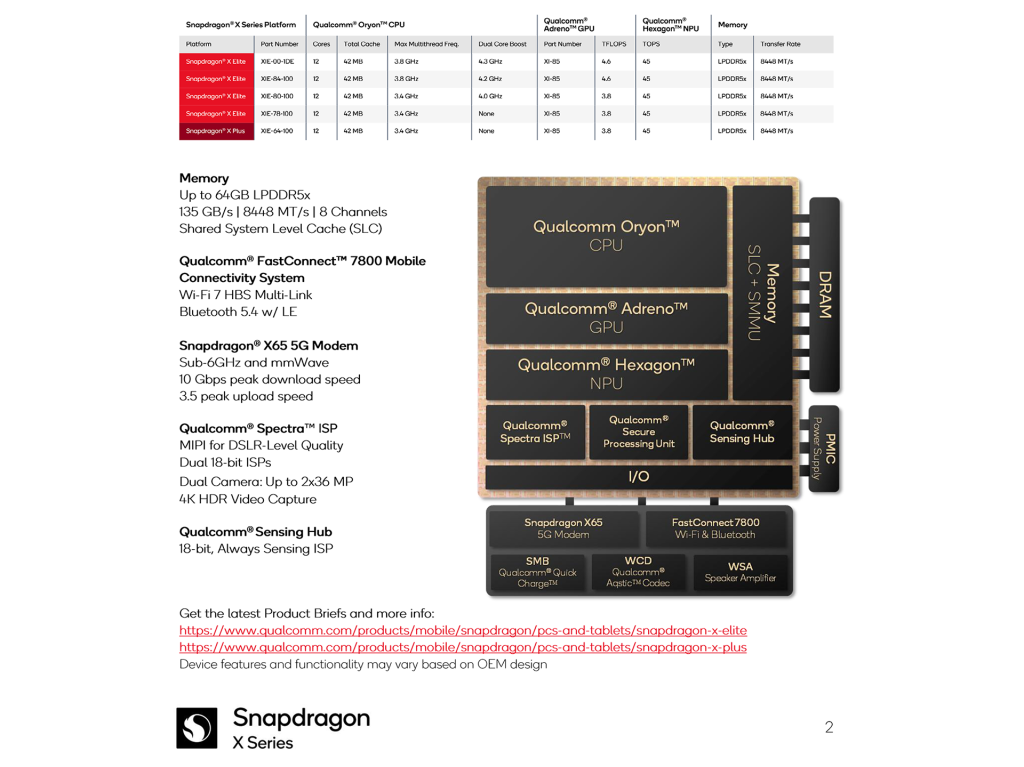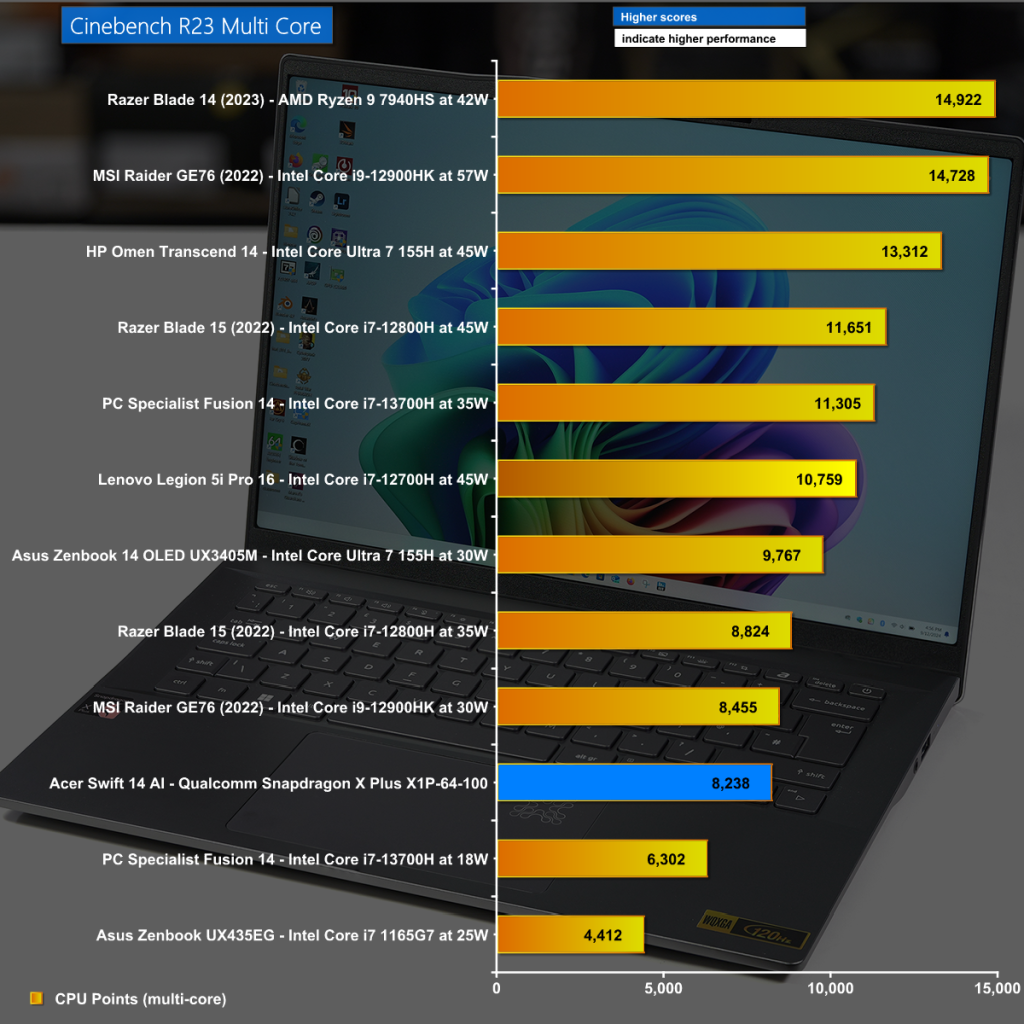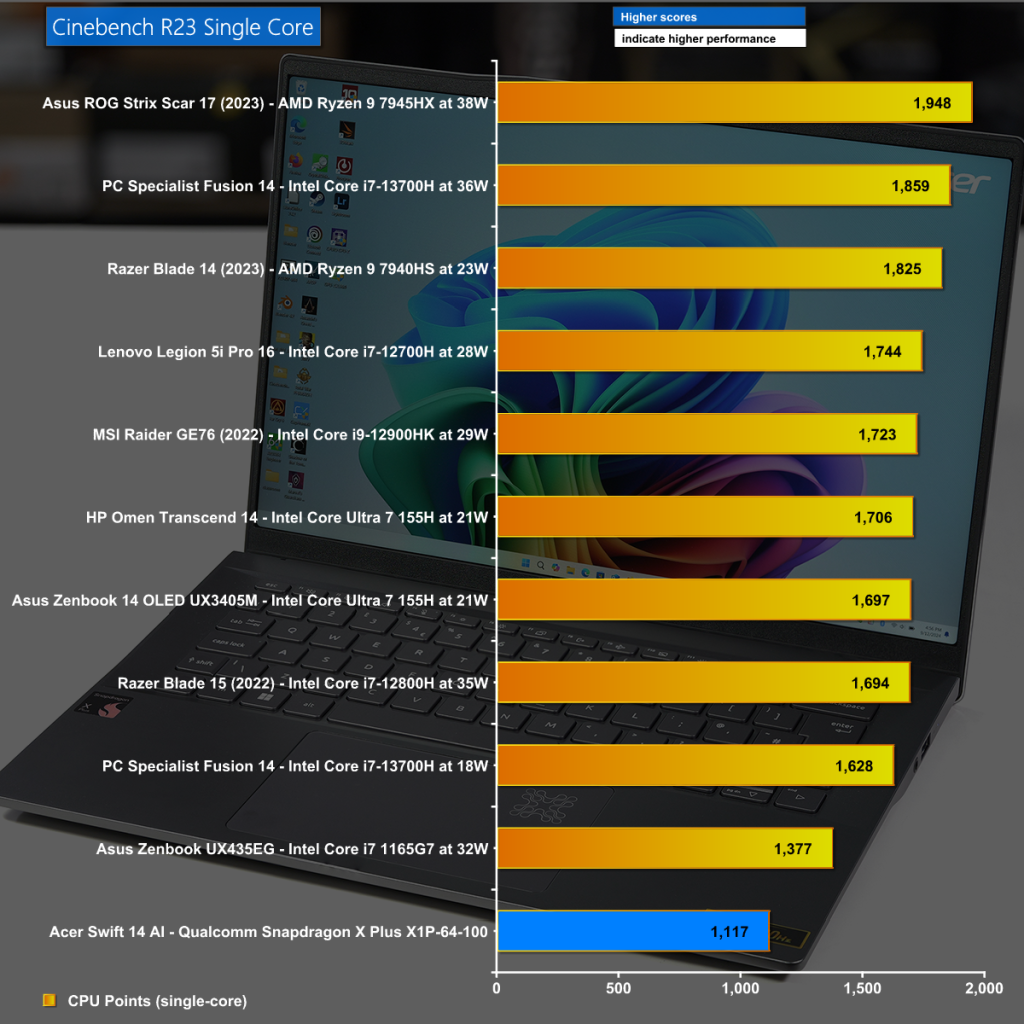Qualcomm Snapdragon X Plus
At the heart of the Acer Swift 14 AI we have the Qualcomm SoC which powers absolutely everything. We have covered Qualcomm Snapdragon from the early days when it was codenamed Oryon and then launched as the 12-core Snapdragon X Elite HERE and we followed up with more news when Qualcomm launched the Snapdragon X Plus 10- and 8-core variants HERE.
As you can imagine, KitGuru welcomes the arrival of new processors to the laptop market but Qualcomm Snapdragon X brings more changes than you might expect. The familiar x86 CPUs from AMD and Intel run natively on Microsoft Windows without any fuss or drama. By contrast you should assume that software will not run on Qualcomm's Arm hardware unless it explicitly promises support. In our video we show Windows 11 for Arm with software that is correctly supported and also software that refused to run.
We show in our video that GPU-Z refused to run, CPU-Z reported partial information and HWiNFO64 did a decent job but was unable to display power readings from within the Snapdragon X Plus SoC. We saw the same thing recently when Intel showed off their new Lunar Lake laptops and were obliged to use external power meters to show how the Qualcomm chips were performing.
This puts us in an unusual position as the Qualcomm Snapdragon X is pretty much a sealed black box. We can report the ten cores of the Snapdragon X Plus X1P-64-100 ran at 3.4GHz under load and the Qualcomm Adreno 741 ran at 1.25GHz but that is all we were able to glean.
Performance Testing
Cinebench R23 Multi Core
In Cinebench R23 Multi Core the Snapdragon X Plus chugged along at a reasonable speed and the ten cores delivered the same performance as an Intel Core i7 or i9 from a couple of years ago.
Cinebench R23 Single Core
It is the Single Core test of Cinebench R23 that shows the low powered nature of the Snapdragon X as it slumps to the bottom of our chart.
 KitGuru KitGuru.net – Tech News | Hardware News | Hardware Reviews | IOS | Mobile | Gaming | Graphics Cards
KitGuru KitGuru.net – Tech News | Hardware News | Hardware Reviews | IOS | Mobile | Gaming | Graphics Cards








